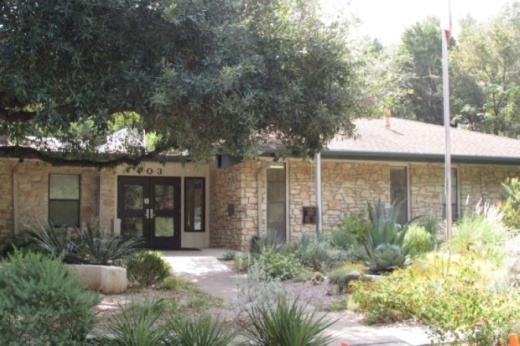On Nov. 20, Rollingwood City Council members met to discuss Alternative 2C, the most recently updated design plan for the MoPac South Expansion Project, and to formulate plans for how the city would like to proceed regarding their feedback to the Central Texas Regional Mobility Authority—the agency that designed the project.
The overview
The Mobility Authority is currently accepting public feedback on updated design plans for the MoPac South Expansion Project during an open house period lasting from Nov. 12 to Dec. 29. The expansion project is focused on an 8-mile stretch of MoPac, from East Cesar Chavez to Slaughter Lane, and is intended to improve traffic through adding express lanes.
The 2C iteration adds two express lanes, running both north and south on MoPac, with elevated ramps near Barton Skyway.
Currently, a lack of access to express lanes for drivers entering MoPac from Bee Cave Road appears to be the expansion plan’s biggest impact on Rollingwood residents, City Administrator Ashley Wayman said.
The current express lane entrance, Wayman said, would be closed, and a new entrance would open further north on MoPac, near RM 2222, preventing Rollingwood drivers from accessing the express lanes for a considerable distance once they enter the highway.
The project’s updated plans also include elevated roadways near Barton Skyway, which the city is concerned about for visual and noise-related reasons, council member Kevin Glasheen said.
The framework
Amy Pattillo, a representative of the CAMPO Transportation Policy Board, attended the Nov. 20 meeting and addressed some of the council's concerns while providing an update on the project’s status.
In terms of the project’s current phase and next steps, Pattillo explained that this open house will be the last before the Mobility Authority heads to the final environmental assessment stage.
Essentially, Pattillo said, this open house is the last phase in which the city can say that the Mobility Authority is not able to remedy certain risks properly and request that certain aspects of the project’s design be changed.
An environmental assessment, or EA, is necessitated by the National Environmental Policy Act of 1969 and is required by agencies to assess the environmental impact for large projects such as the MoPac expansion.
Previously, both Rollingwood officials and Travis County officials have requested that the Mobility Authority study this project under an “environmental impact statement,” or EIS, which is a higher level of assessment, said Pattillo.
Once the environmental assessment is complete, it will be sent to the Texas Transportation Commission, which will then vote on whether to accept the EA or send it back and say that the authority must instead complete an EIS, Pattillo said.
What else?
Another concern brought to attention by Pattillo, aside from traffic inconveniences or potentially noisy elevated roadways, was safety.
“I can see four new bottleneck points between Barton Skyway and Enfield just from the design of where the toll lane ingress and egress are,” Pattillo said. “It’s not just a loss of access; we’re getting a reduction in safety because of new bottlenecks being introduced.”
The study as a whole was intended to reliably get drivers from Slaughter Lane to Cesar Chavez, Pattillo said, instead of addressing safety and congestion points that may be encountered along the way.
Mayor Gavin Massingill questioned whether the benefits for north-south traffic would outweigh the potential negative impacts for east-west traffic in communities such as Rollingwood.
“What is the actual improvement at the end of the line?” Massingill said. “You may be increasing our travel times by 20 minutes all to save six minutes for someone going to Slaughter.”
Council member Sara Hutson also argued that north-south traffic was being given undue priority.
“It seems to me that they are way more concerned with traffic coming from south to north, and they are paying no mind at all to people coming from the west in—so 360 or Bee Cave [Road] or any of that,” Hutson said.
What’s next
Council members invited the Mobility Authority to their Dec. 18 council meeting in order to give residents a better understanding of what the Alternative 2C plan entails and to allow relevant jurisdictions to discuss the updated plans.
TxDOT will be invited, as well as representatives from the city of West Lake Hills and the Westlake Chamber of Commerce.
Public comments on Alternative 2C can be submitted until Dec. 29 through an online survey form provided by the Mobility Authority.





